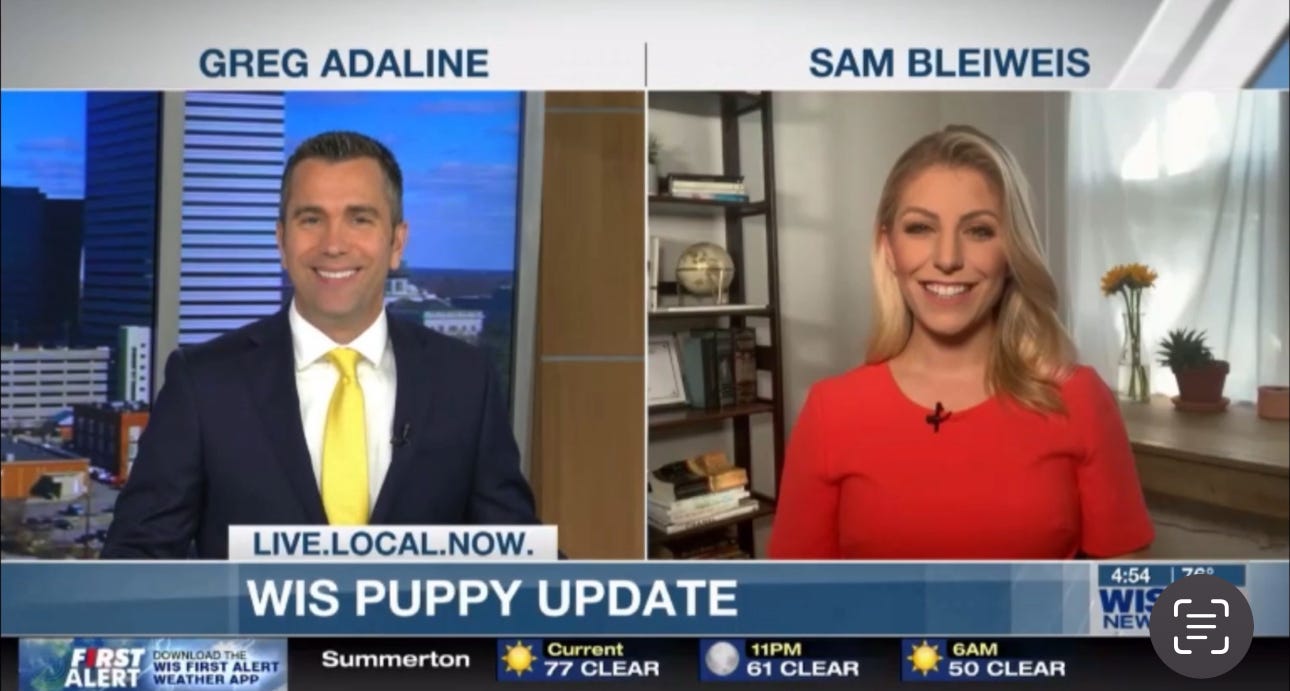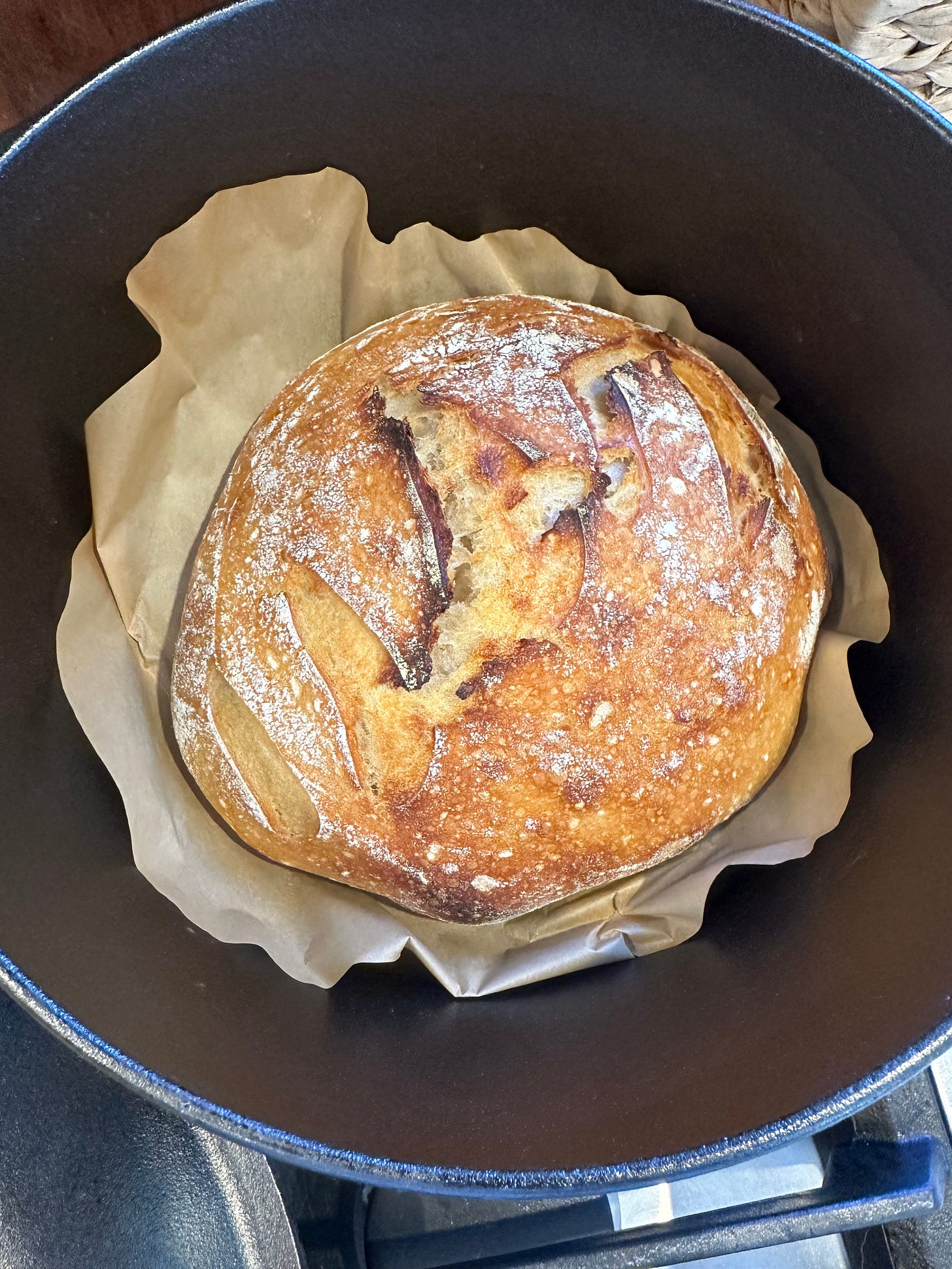It’s a crispy, sunny fall morning and a golden sun is shining through our den window while I clip into my Peloton bike.
The morning outside is absolutely New England postcard idyllic. Like, “film the Hallmark holiday movie, break out your flannel and go to the pumpkin patch to get a piping hot fresh cup of apple cider” kind of beautiful. The trees are releasing orange and red leaves in feather-light waves.
The late morning sun glazes over the screen on my bike and I catch a glimpse of myself. I see a new, softer version of a woman whom I’ve now met on the other side of pregnancy, birth and most recently — the tail end of the fourth trimester. She doesn’t look half bad, I think. The kangaroo pouch has receded into soft tucks of skin and the all-of-the-sudden longer stretches of sleep are clearly doing wonders for her under-eye situation. Her facial features — the cheekbones, the jawline — seem to be magically surfacing after months of spending time under water.
I recognize that “she” is “me.” But I still don’t really know her. She’s new to me. Like a butterfly breaking out of her cocoon or an upgraded phone, she feels like pulling the plastic tab to activate the battery of that thing you ordered off Amazon. Sam 2.0.
But how do I get to know her?
Before we hit the dead of winter, I’m walking a ton. And as I walk, I have a slate of podcasts I listen to while I make googly faces at my baby. One of my current favorites is by Martha Beck. If you’ve never listened to anything by her, I cannot recommend her podcast enough (it’s based off a beautiful group she holds once a week) called The Gathering Room podcast. She is a life coach, a speaker and an insanely accomplished scholar… and holy cow is she an expander in my life. I’m currently reading her book “The Way of Integrity” (after picking it up and putting it down many times because I love just LISTENING to her so much). Maybe once I’m done with that, I’ll have something more prolific to deliver here on the nature of my own integrity.
But for this week, I’ve been mulling over this line again and again that I heard in her Gathering Room podcast about awakening your magician.
“You know you’re coming out of a state of anxiety when you start to get curious again.”
Read. That. Again.
“You know you’re coming out of a state of anxiety when you start to get curious again.”
How simple. How bold. How utterly APPLICABLE to our everyday lives. But what does this have anything to do with my postpartum body?
Sourdough. That’s right, it has to do with sourdough. Stay with me. I promise we’re not completely off the postpartum-brain-rails yet.
If you follow me on Instagram, you may have seen that I have a current obsession with sourdough …. everything. Making my sourdough starter was a whole thread on my stories for the week of its inception. Then I moved into making sourdough discard recipes: banana bread, pancakes and tortillas. And finally, I began the art of perfecting a loaf of sourdough bread (I’m nowhere close, by the way, but damn does it taste good to play test kitchen).
The urge to begin my sourdough starter began from a simple, curious question. How would it feel to make more of my own food? How would that feel in this new body, in Sam 2.0? The irony is: I think this is a quesstion many people asked back in 2020, but while they were IN a state of anxiety. Remember how many people baked bread at the beginning of the pandemic?
My question was born from a similar *physical* situation to many of our WFH setups during the pandemic — I’m at home on maternity leave. But the input and the reasoning is dramatically different. My question of “how will making more of my own food feel in my body” has nothing to do with exerting control over a situation I cannot affect (i.e.- a global pandemic and a deadly virus) but rather, a moment in time where I have space and time to be expansive. It’s a curious question when the path ahead is completely unclear, because I’ve simply never been here before. Pregnancy and postpartum changed me forever. There is no going back. Sam 2.0 is here and I’m getting to know her, but for the first time in my life I’m not attached to putting her in a chokehold to mold her. It’s just a curious question: “What happens if we feed her a little differently than we did before?”
When everyone else was baking bread in 2020, I was in a heightened state of anxiety. I remember feeling like I had all of this physical time. I was anchoring the news from home and the hours I’d never had during a normal work day seemed to stretch before me. But I was completely immobile. Paralyzed by anxiety over the job of delivering news from my home rental office (currently laughing inwardly at what a haphazard setup that was) and unable to see outside the blinders. I was far too anxious to get curious. I didn’t want to bake bread, I just wanted to order pho and binge watch all my comfort shows after tossing live on air FROM MY HOUSE to press conference after press conference. What a wild concept that is to me now.
Now, on a Saturday morning, I’m in my kitchen. Covered in flour. I feel like a 4th grader tending to my science experiment. I’m feeling continuous waves of creativity: what if I add flax to my banana bread today? If I let my dough bulk ferment for a while longer, how does that change the texture of my sourdough loaf? I get excited to plop the baby in my husband’s lap and take myself to the kitchen on this one day a week— where my 8-year-old self enters the chat.
NASA commissioned a study roughly 50 years ago focusing on young children and their creativity. A group of 1,600 kids ages 3-5 underwent a test on creativity. The results? Ninety eight percent of this group got the label of “creative geniuses.” But their genius dropped off over time: to 30% by age 10 and 12% at age 15. When compared to adults, only 2% maintained this level of creative genius.
The study was focused on the effects of traditional schooling on kids. I’m not here to pass judgment on schooling — but what I take from the study is this: as we get older, it’s an easy sweeping generalization to say that we tend to lose our creative sparks, whether that’s due to schooling, life stressors, societal expectations, a global pandemic, etc. So what does it take to get that spark back?
It not only takes space and time (because during 2020 we had space and time) but as Martha argues, there are 4 elements to awakening this creativity, this “magician,” in ourselves: calm, curiosity, courage, and feeling cornered. Maybe another day we get into the sensation of being cornered. If you listen to the pod, message me offline and let’s chat about it.
So back to my original question: “how does it feel to make more of the food that goes into my body?”
It feels GOOD. Sam 2.0 is finding her postpartum runs feel way better than any run she’s ever taken pre-baby. Even though she’s slower and steadier, her body feels good. The curiosity over the way food affects her has me rethinking all kinds of values: what if I try re-thinking the way we purchase meat? *researches regenerative farming*…
I welcome all of her, because she’s allowing me to get curious about myself and about my body in this new phase of life. She’s a continuous science experiment. If I zoom out and look at my kitchen from up above, I see a 4-year-old Sam — straight-cut bangs and all — on a step stool, passing the sourdough starter to Sam 2.0. They’re laughing. Covered in flour and mesmerized by the fact that a simple task of mixing simple things can create a living being that rises.
All of that to say: we can be deeply malleable beings without forcing ourselves into a mold. Finding creativity can be as tactile as the everyday task of seeing the effects of food on our bodies. It can also be as accessible as approaching a workday with confidence and curiosity. But at its most basic level, it can be as simple as baking a loaf of bread for the very first time in your life.
(P.S. - you may have noticed I changed the name of this publication! I didn’t know what to name it for quite a while, so I just left it as my own name until I got a download. We all have different ways of telling stories, but I find when I’m telling my own I always come back to this phrase: “all of that to say.” It’s usually at the end of whatever story I’m telling. It’s always the moment when I’m wrapping it up and I get to the POINT. Sometimes it takes a long time. Sometimes it’s quick. But regardless, there’s always a moral to the story. A purpose, to all of “that.”)






